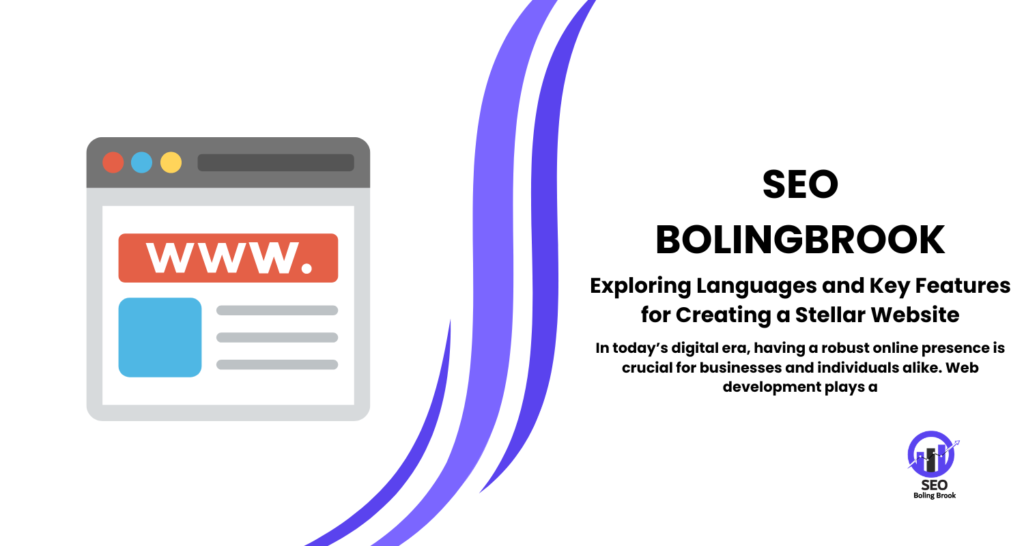In today’s digital era, having a robust online presence is crucial for businesses and individuals alike. Web development plays a pivotal role in creating dynamic, functional, and user-friendly websites that cater to diverse needs and objectives. Let’s delve into the importance of web development, explore various programming languages commonly used, and discuss key features to consider when embarking on the journey of website creation.
The Significance of Web Development
1. Enhanced User Experience:
- Effective web development focuses on creating a seamless and intuitive user experience. By optimizing website navigation, loading speed, and responsiveness, developers ensure visitors can easily find information and accomplish their goals, fostering engagement and satisfaction.
2. Brand Visibility and Credibility:
- A well-designed and functional website enhances brand visibility and credibility. A professional-looking website instills trust and confidence among visitors, encouraging them to explore further and engage with the content or services offered.
3. Scalability and Flexibility:
- Scalable web development solutions allow websites to grow and evolve in tandem with business needs and objectives. Whether it’s adding new features, expanding content, or accommodating increased traffic, a scalable website can adapt to changing requirements without compromising performance or user experience.
Exploring Web Development Languages
1. HTML/CSS:
- HTML (HyperText Markup Language) and CSS (Cascading Style Sheets) form the foundation of web development. HTML structures the content on web pages, while CSS styles and enhances the visual presentation, ensuring consistency and aesthetics across the site.
2. JavaScript:
- JavaScript is a versatile programming language that adds interactivity and dynamic functionality to websites. From creating responsive navigation menus to implementing complex animations and user interfaces, JavaScript enhances user engagement and interaction.
3. PHP:
- PHP (Hypertext Preprocessor) is a server-side scripting language commonly used for developing dynamic websites and web applications. PHP facilitates seamless data integration, form processing, and content management, enabling developers to create feature-rich and interactive web solutions.
4. Python:
- Python is a versatile programming language renowned for its simplicity and readability. Python’s robust libraries and frameworks, such as Django and Flask, empower developers to create scalable web applications, data-driven websites, and sophisticated backend systems with ease.
Key Features to Consider When Creating a Website
1. Responsive Design:
- Ensuring your website is accessible and functional across various devices and screen sizes is paramount. Responsive design adapts the layout and content of your site to provide an optimal viewing experience, enhancing user satisfaction and engagement.
2. Intuitive Navigation:
- A well-structured and intuitive navigation system is essential for guiding visitors through your website and helping them find information effortlessly. Thoughtfully designed menus, breadcrumbs, and search functionality can significantly enhance user experience and retention.
3. Fast Loading Speed:
- In today’s fast-paced digital landscape, users expect websites to load quickly and efficiently. Optimizing website performance through efficient coding, image optimization, and leveraging caching techniques can significantly improve loading speed, reducing bounce rates and enhancing user satisfaction.
4. SEO-Friendly Architecture:
- Incorporating SEO best practices in web development ensures your website is discoverable and ranks prominently in search engine results. Implementing proper meta tags, utilizing schema markup, and creating a logical site structure can enhance visibility and drive organic traffic to your site.
Conclusion: Web development is a cornerstone of creating impactful and successful websites that resonate with target audiences and achieve business objectives. By leveraging the right programming languages, focusing on key features, and prioritizing user experience, you can create a compelling online presence that fosters engagement, drives growth, and positions you for success in the digital landscape. Whether you’re embarking on a new web development project or seeking to enhance an existing site, embracing these principles and best practices can guide you on the path to creating a stellar website that stands out in the digital realm.

